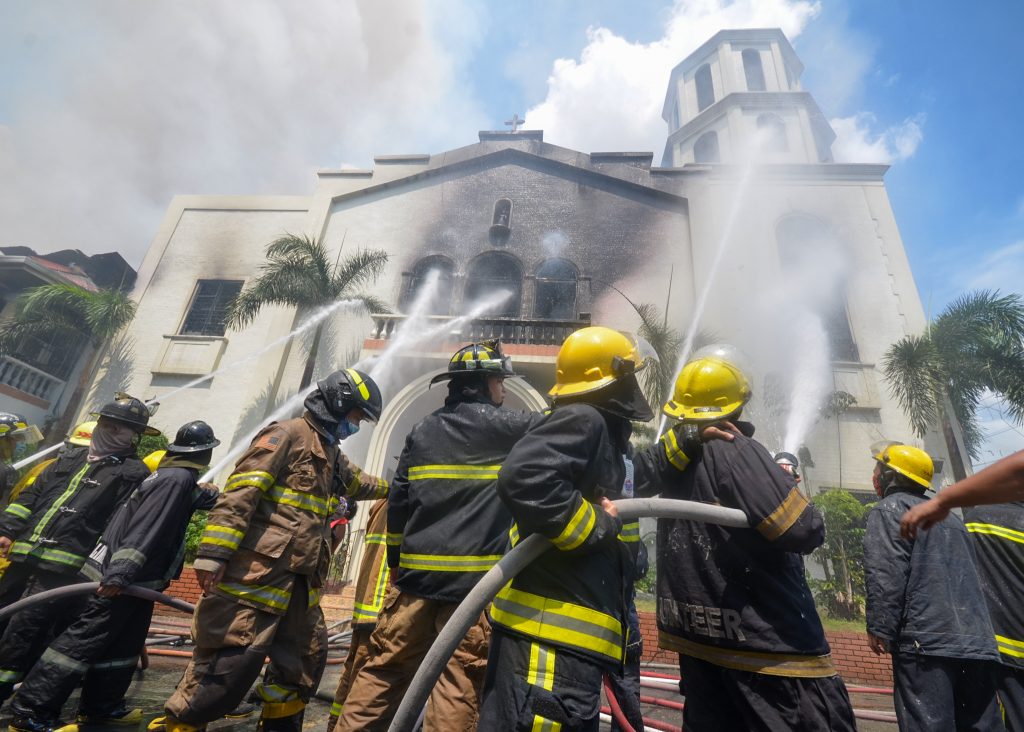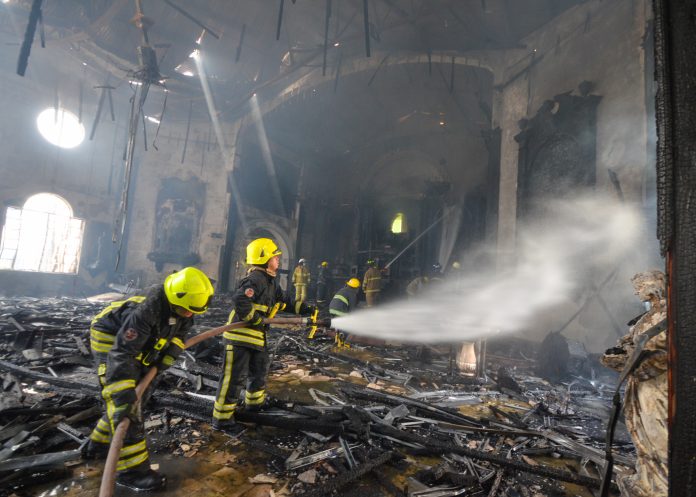A 400-year old image of the Child Jesus, known as the Santo Niño de Pandacan in the Philippines, has been reported missing following a fire that hit one of the country’s oldest churches on July 10.
Fire broke out at the Sto. Niño Parish church, home of the image of the Child Jesus, in Manila’s Pandacan district past one o’clock in the afternoon on Friday.
Although there were no reported casualties, the church’s altar collapsed, pews were burned, and religious images were destroyed.
The image of the Child Jesus was also missing, according to residents and firefighters who went inside the gutted structure after the fire to salvage what was left of the building.
Firefighter Daniel Paul Pucio, a devotee of the Child Jesus and a regular visitor of the Sto. Niño parish church, was emotional when he recounted what happened.
“I was confounded with what was happening, my eyes were clouded with tears and smoke, in my mind I just wanted to save the revered images,” he told LiCAS.news.
He said he wanted to go near an image of the Virgin Mary by the wall, but was reluctant because the roof was about to collapse.
“I don’t know why, but the first thing I did was ask why all the bad things are happening to our country and pleaded to put a stop to these,” he said.
He then found himself crying, asking forgiveness from the Child Jesus, as he helped battle the flames.
“I told Him we did everything to find him, but it was too late, we failed,” he said.
“I badly wanted to find the image of the Child Jesus,” he said, adding that he knows how Filipinos “are very close to Him, and as Catholics, images are very important to our devotion.”
Pucio said he hopes and prays that the image would be found and is just “wandering around.”
“I’m still hopeful as a devotee of the Child Jesus that we will find Him. We believe that He wanders around every time there is a calamity,” he said.
Devotees believe that the centuries-old image is miraculous and would “wander around” every time a disaster or a calamity would threaten the community.

The first stone church in Pandacan was built in 1732 by Father Francisco del Rosario. The church would take 30 years to complete.
The image of the Child of Jesus was enshrined in the church and its feast is traditionally celebrated on the third Sunday of January.
According to legend, the image of the Santo Niño was recovered from a well near the church and some say the water from the well can cause miraculous healing.
The well has long been sealed due to pollutants, but a shrine stands on what was once the well.
The original church, completed in 1760, was twice destroyed by earthquakes. A modern structure was built on the ruins, including a parish school which stands on what used to be a cemetery.
The district of Pandacan in Manila was established as a community in 1574 when Franciscan priests set up their first mission house in the area.
Pandacan was originally part of the parish of Sampaloc, also in Manila, but was established as a separate parish in 1712.
The area used to be a farming community, producing small quantities of rice and sugar that were sold to the Spanish enclave in the old walled city of Intramuros.
The old Pandacan used to produce bricks and tiles and colorful cotton laces. The district also produced shoes and small boats.
In the 19th century, Pandacan was described as “Little Venice” and “Little Italy” because of its numerous canals and estuaries that lead to the Pasig River.
People would leisurely row through the estuaries in late afternoons as described by Filipino writer Francisco Balagtas. Pandacan was known to be home to balladeers and musicians in the early times.
Late in the Spanish era and into the American period, Pandacan was developed into an industrial estate where manufacturing companies were built.









